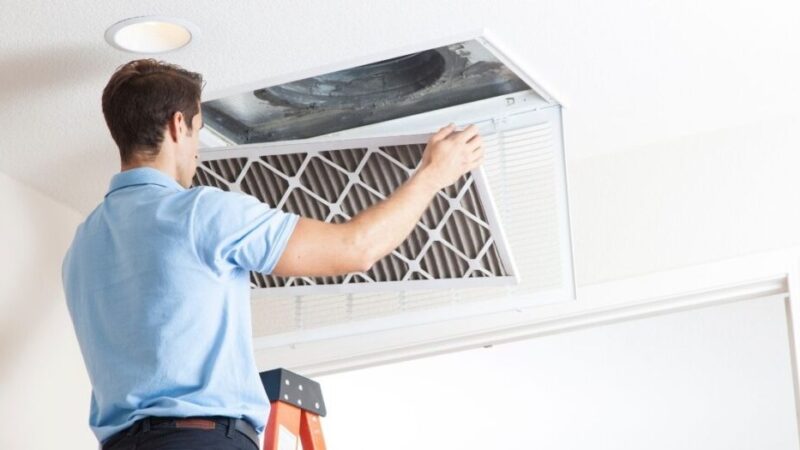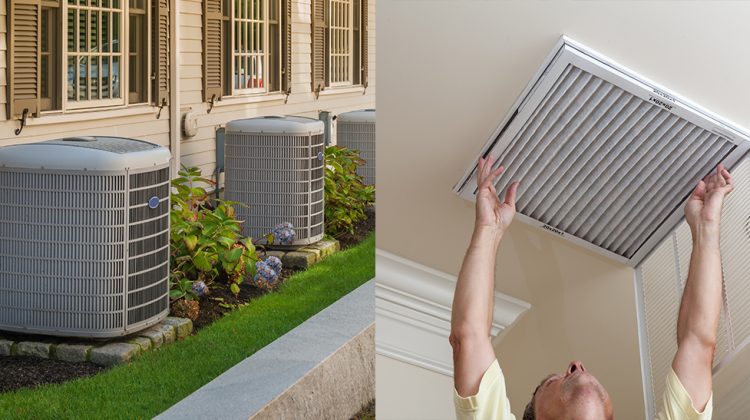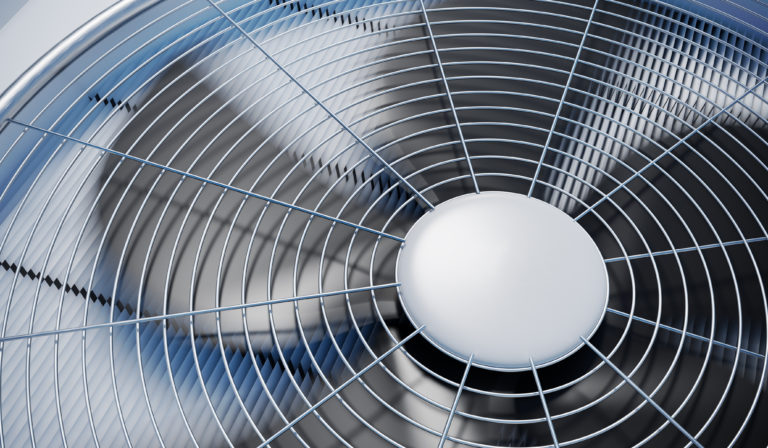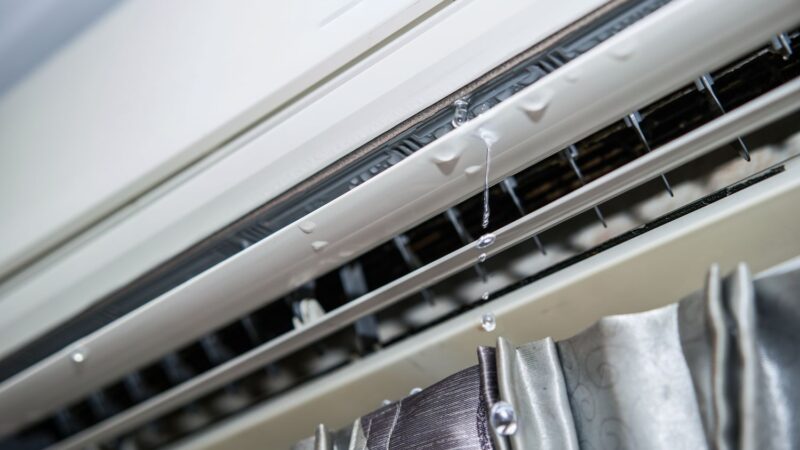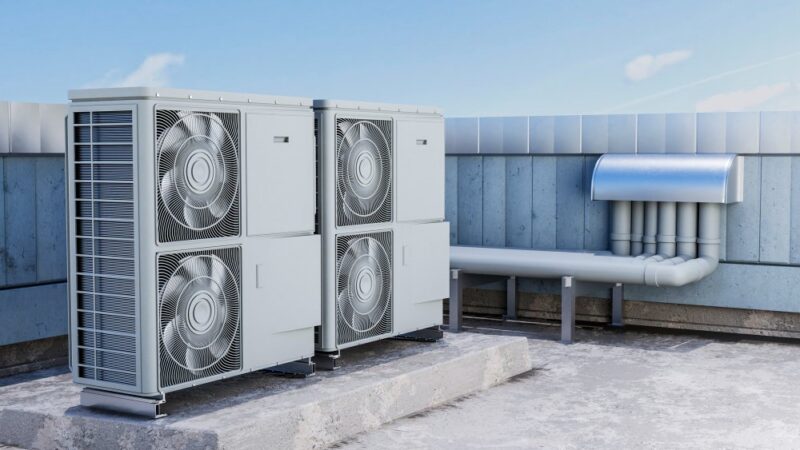8 Most Common Types Of HVAC Systems
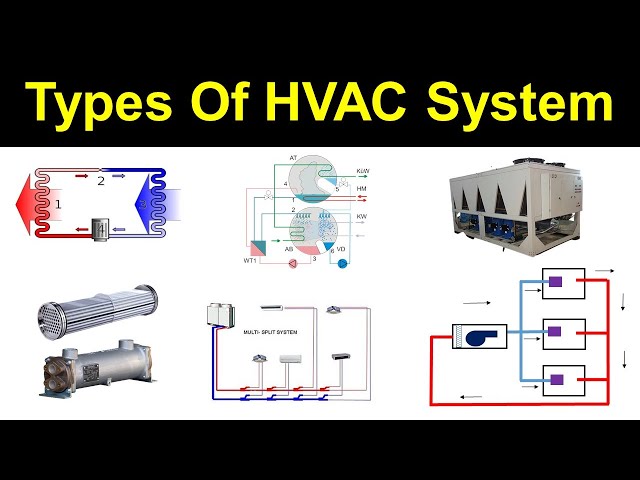
Heating, Ventilation, and Air Conditioning (HVAC) systems are crucial for maintaining comfortable indoor temperatures throughout the year. Whether you want to cool down during hot summers or stay warm in the winter, the right HVAC system is essential. There are various types of HVAC systems, each with unique features and advantages, making the selection process a bit overwhelming.
In this article, we will explore the different types of HVAC systems, how they operate, and their pros and cons. By the end, you will better understand which system may best suit your needs.
Ducted HVAC Systems
Split systems
Split systems are popular for heating and cooling homes. They have two parts: one for heating and one for cooling, both controlled by a thermostat.
The heating unit is usually inside, in places like basements or closets. It runs on gas and uses a fan to spread heat through the house’s ducts. The cooling unit is outside and connects to the inside unit with tubes. It uses compressors and refrigerant to cool the air, and a fan blows the hot air away from the house.
hybrid split
A hybrid split HVAC system is like a regular split system but offers more flexibility with heating. It has the same setup and cooling unit, but instead of using just gas to heat, it can switch between gas and electric power. While electric heating is generally slower and less powerful than gas, this option lets building owners control energy use better and save on costs, especially in milder climates.
Packaged heating and cooling systems
Packaged heating and cooling systems are ideal for small buildings with limited space. Unlike split systems, they combine all the heating and cooling components into a single unit, which is typically installed on the roof, in the attic, or near the foundation of the building.
These systems connect to the building’s ductwork through one opening in the wall, making installation simpler. Depending on the climate, you can choose between a packaged heat pump with evaporator coils or a packaged air conditioner with an air handler and optional heat elements. Packaged systems are generally less expensive to install and easier to maintain compared to split systems, making them a practical choice for small spaces.
Zoned System
HVAC zoning systems allow you to manage the temperature in different rooms or areas of a building more effectively. Technicians can create zones in ducted HVAC systems in several ways, often based on the size of the building. For larger homes, installing multiple HVAC systems for different floors can be beneficial. This method requires having separate heating and cooling units for each zone.
Another zoning method involves installing dampers in the air ducts. These dampers can be adjusted manually or automatically to control the airflow to various areas. By partially closing a damper, you can limit the airflow to one zone while increasing it in another, making setting the desired temperature for each room easier. This approach enhances comfort and improves energy efficiency by directing air only to the areas that need it.
Ductless HVAC Systems
Duct-free HVAC systems, also known as mini-split systems, provide heating and cooling without the need for ducts. They are ideal for small buildings or temporary work sites and are versatile in their applications.
Mini-split systems
Mini-split systems consist of an outdoor unit (compressor and condenser) and one or more indoor units that handle the air. Each indoor unit connects to the outdoor unit using copper tubing and is controlled by its own thermostat. This setup allows you to heat or cool individual rooms separately, making them energy-efficient.
While these systems can be pricey to install, they offer significant energy savings over time by only heating or cooling the spaces that are in use. This targeted approach reduces energy waste and lowers overall costs. However, it’s worth noting that in extremely cold climates, the heating capabilities of mini-split systems may be less effective, possibly requiring supplemental heating solutions.
Hydronic Heating
Hydronic heating stands out from other HVAC systems because it uses water to heat your home. Here’s how it operates:
- Boiler: Heats water.
- Pipes: The heated water travels through pipes placed under the floors.
- Radiators/Baseboard Heaters: Hot water flows through radiators or baseboard heaters, releasing heat into the rooms.
Additionally, some homes use hydronic systems for radiant floor heating, warming up the floors to make the entire space more comfortable. This method is efficient and provides even, consistent heat throughout your home.
Portable spot coolers
Portable spot coolers are handy air conditioning units that you can move around to cool large rooms, factories, or outdoor areas. Here’s how they work:
These units take in warm air, cool it down using a coil filled with refrigerant, and then blow the cold air back into the room. They also reduce humidity by turning it into water, which is then drained out through a hose or into a bucket.
Portable spot coolers can be used anywhere there’s an electrical outlet. They come with wheels, making it easy to move them around. However, they do produce warm air that needs to be vented outside. This usually means using a flexible tube that you place through a door, window, or ceiling to keep the warm air from re-entering the space you’re trying to cool.
Portable Heat Pump
A portable heat pump is a compact device that offers both heating and cooling functions, making it versatile for different weather conditions. Similar to a spot cooler, it cools your space during warm months. For heating, it pulls in air from outside, passes it over a condenser coil, and releases warm air into the room. It features a reversing valve that easily switches between heating and cooling modes. This dual capability makes it an excellent choice for maintaining comfort in various climates.
Pros And Cons Of Ducted And Ductless HVAC Systems
| Feature | Ducted HVAC Systems | Ductless HVAC Systems |
|---|---|---|
| Pros | Consistent temperature throughout the home | Flexible temperature control for individual rooms |
| Minimal impact on home aesthetics (hidden ducts) | Easier and quicker installation | |
| Can add value to the property | More energy-efficient with no energy loss through ducts | |
| Quiet operation (noise is away from living areas) | Ideal for small spaces or homes without existing ducts | |
| Cons | High initial installation cost | Higher upfront cost per unit |
| Requires regular cleaning and maintenance | Visible indoor units (may affect aesthetics) | |
| Potential energy loss due to duct leaks | Requires regular cleaning and maintenance of filters | |
| Limited control of temperature in individual rooms | May need multiple units for whole-house coverage, increasing costs |
Recommendation
Why Does My Ac keep Freezing Up? Here’s How to Fix It
Air Conditioner Smells Musty? Here’s How to Fix It
How Much Electricity Does an Air Purifier Use?
Air Purifier Vs Humidifier: Which One Do You Need?
Your Dehumidifier Keeps Icing Up, Why and How to Fix It?
Conclusion
In Conclusion, Choosing the right HVAC system is key for year-round comfort. This article covered different systems, such as split, hybrid split, packaged, ductless mini-split, hydronic heating, and portable options. Each system has its own benefits and downsides, making the choice depend on your specific needs. Understanding these options helps you pick the best system for your home, ensuring efficient heating and cooling.
FAQs
Q: What are the four types of HVAC systems?
A: There are four primary types of HVAC systems: split systems, hybrid systems, ductless systems, and packaged systems. Each has its advantages and disadvantages, and understanding these will help you determine which one is the best fit for your needs.
Q: What is the most common HVAC system?
A: Traditional split systems are homes’ most frequently used HVAC systems. They consist of one indoor unit and one outdoor unit. These systems can be customized to suit the specific climate needs of your area, using a furnace for heating and an air conditioner for cooling.
Q: What are the three categories of HVAC distribution systems?
A: There are three categories of HVAC distribution systems: 1. Split Systems, 2. Hybrid Heat Split Systems, and 3. Duct-Free Mini-Split Systems.
Q: What are the four cycles of HVAC?
A: The four cycles of an HVAC system are compression, condensation, expansion, and evaporation. These steps work in a closed system to keep the refrigerant moving, allowing the air conditioner to cool efficiently by reusing the refrigerant.


